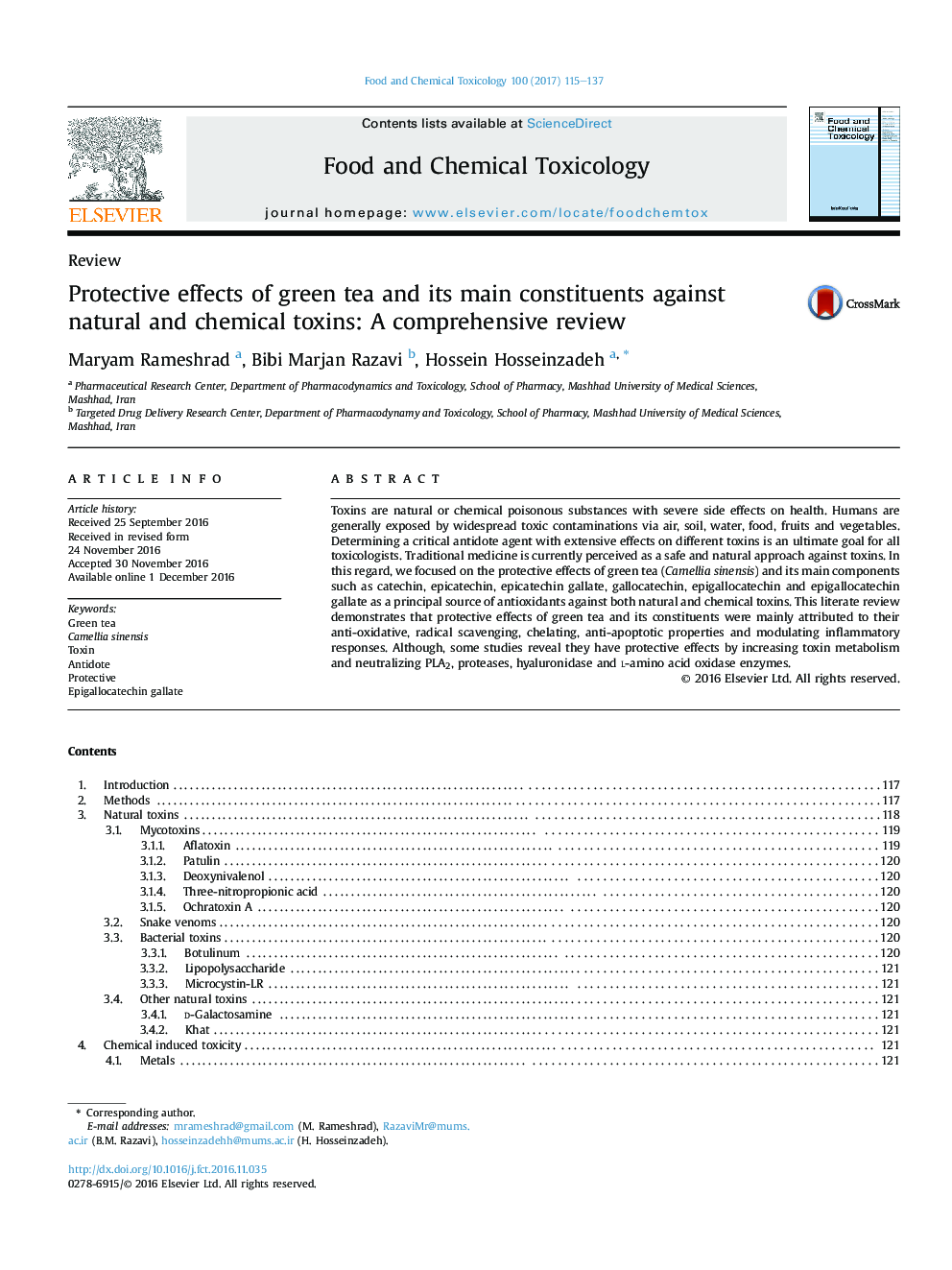| Article ID | Journal | Published Year | Pages | File Type |
|---|---|---|---|---|
| 5560269 | Food and Chemical Toxicology | 2017 | 23 Pages |
â¢Green tea and its main compounds have antidotal and protective effects against environmental and chemical toxins.â¢These effects are attributed to their antioxidant and chelating properties, enzyme inhibition and receptor-mediated.â¢Green tea and its main compounds have a good prospective to introduce as worth antidotal/protective agents in human.
Toxins are natural or chemical poisonous substances with severe side effects on health. Humans are generally exposed by widespread toxic contaminations via air, soil, water, food, fruits and vegetables. Determining a critical antidote agent with extensive effects on different toxins is an ultimate goal for all toxicologists. Traditional medicine is currently perceived as a safe and natural approach against toxins. In this regard, we focused on the protective effects of green tea (Camellia sinensis) and its main components such as catechin, epicatechin, epicatechin gallate, gallocatechin, epigallocatechin and epigallocatechin gallate as a principal source of antioxidants against both natural and chemical toxins. This literate review demonstrates that protective effects of green tea and its constituents were mainly attributed to their anti-oxidative, radical scavenging, chelating, anti-apoptotic properties and modulating inflammatory responses. Although, some studies reveal they have protective effects by increasing toxin metabolism and neutralizing PLA2, proteases, hyaluronidase and l-amino acid oxidase enzymes.
Graphical abstractDownload high-res image (280KB)Download full-size image
